Samsung Galaxy Book 4 Ultra review: best of both worlds
Part creative tool, part gaming laptop

Stuff Verdict
It isn’t flawless, and is seriously expensive in top-spec form, but the4 Galaxy Book4 Ultra is a versatile, creator-friendly powerhouse with a gorgeous screen and a GPU that’s great for gaming.
Pros
- OLED screen is a real stunner
- Fantastic battery life given the high-end hardware
- Great for gaming as well as creative jobs
Cons
- Keyboard feels a little cramped
- Beaten on value by rivals, including the MacBook Pro
- Own-brand software relies on you owning a Samsung phone
Introduction
Samsung is no stranger to a notebook or two, but even its very best laptops have usually steered clear of gaming-grade hardware. That’s only partly true of the new Galaxy Book4 Ultra, which is more a MacBook rival than an esports entertainer – but it’s still one of very few big screen thin-and-lights packing dedicated Nvidia RTX graphics.
This creator-friendly machine is also equipped with a gorgeous AMOLED screen, has slick smartphone integration, and an impressively efficient Intel processor. That means it sits at the peak of Samsung’s laptop mountain, and as such commands a suitably stratospheric price. The version tested here would set you back £2649, making it more expensive than an M3 Pro-powered Apple MacBook Pro – and things only get more expensive once you start speccing extra RAM, storage, or a more potent graphics card. Does it have enough oomph to pull double duty as a gaming laptop when not churning through demanding workloads?
How we test laptops
Every laptop reviewed on Stuff is tested using industry standard benchmarks and apps to assess performance and battery life. We use our years of experience to judge display, sound and general usability. Manufacturers have no visibility on reviews before they appear online, and we never accept payment to feature products.
Find out more about how we test and rate products.
Design & build: slim and slick
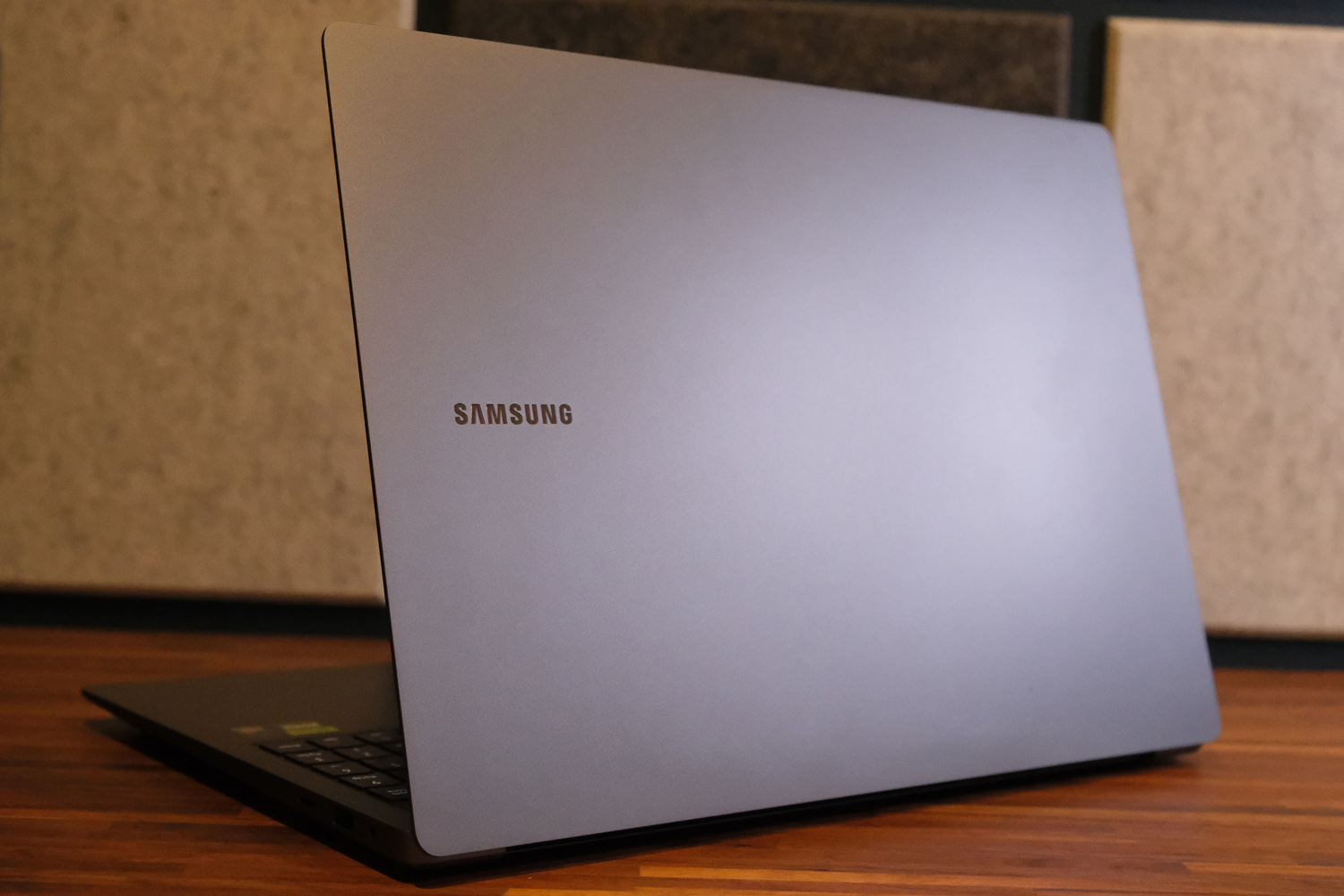
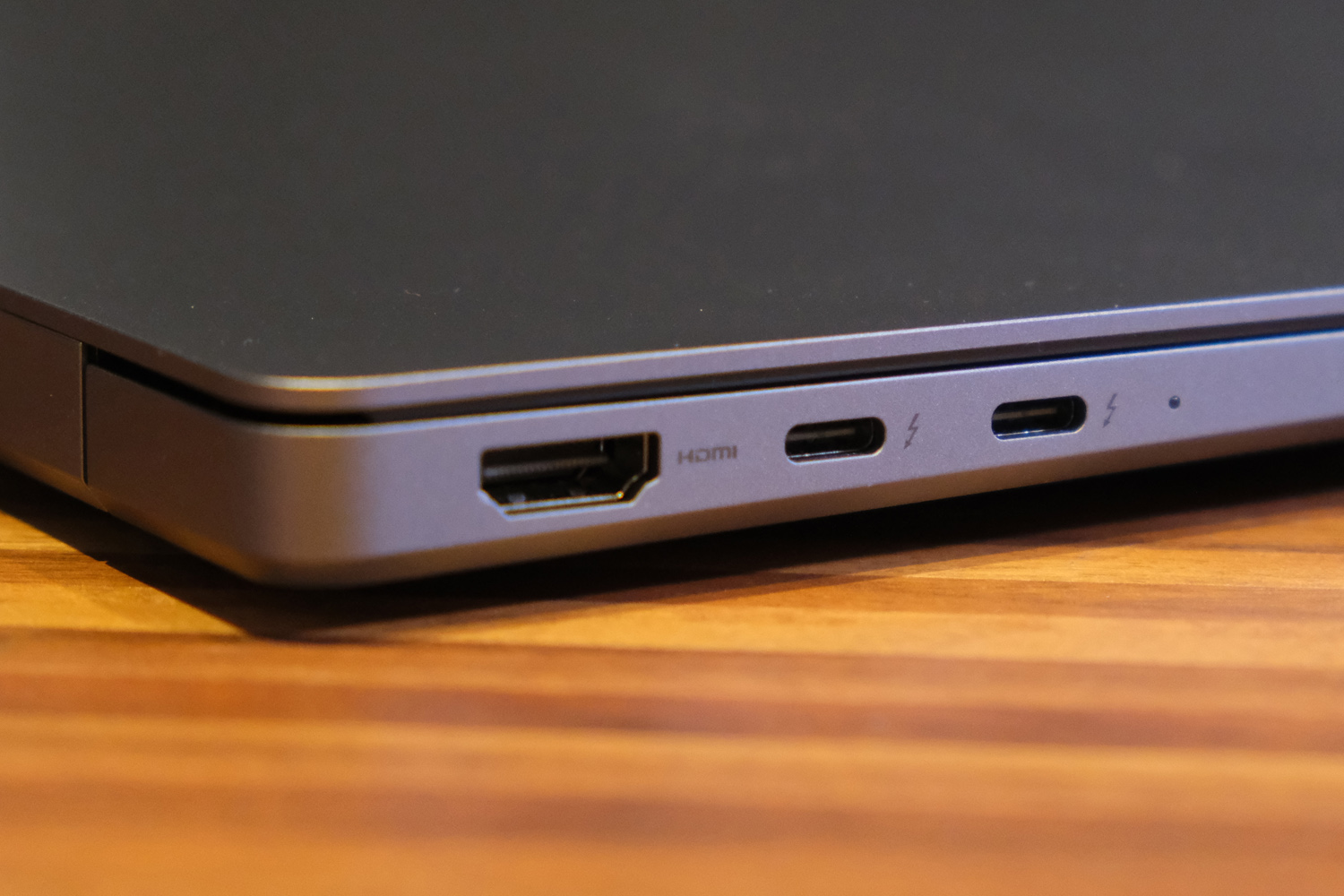
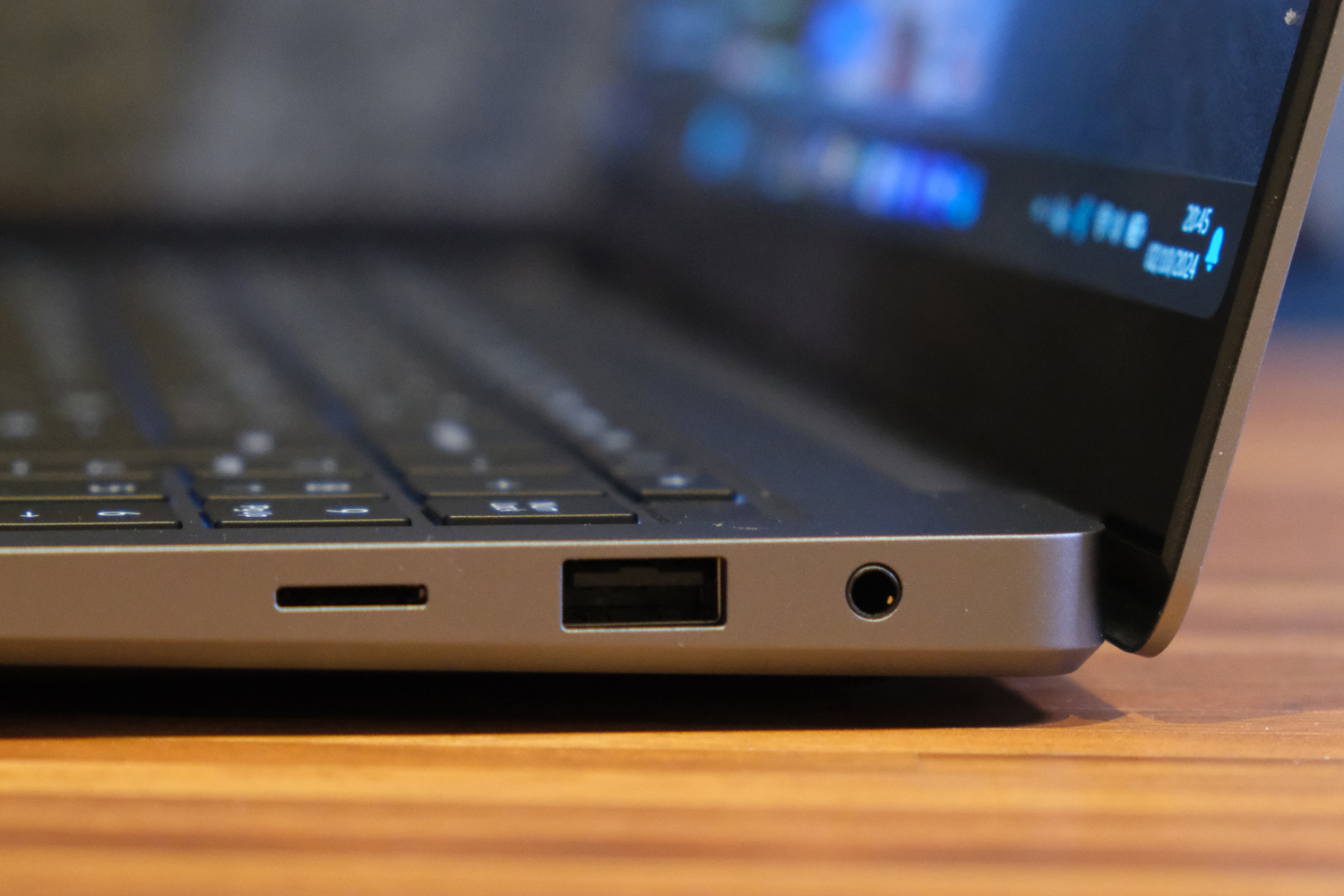
This year’s Galaxy Book Ultra isn’t all that different from the previous generation on the styling front – and that model had a definite whiff of MacBook. It hasn’t fully dissipated here, even now Apple has since refreshed its lineup with more prominent curves and fewer wedges.
It’s still an attractive machine, with minimal branding, high-end materials and a generally high level of finish. There’s the smallest bit of flex to the keyboard tray, but otherwise it’s very robust, with no noticeable wobble from the screen. The Moonstone Grey colour (gunmetal with a slightly blue/purple hue) will be right at home in an office or school environment as well as at home.
Less than 17mm at its thickest point, this laptop will have no trouble slotting in to a tightly packed bag – and at 1.86kg won’t weigh it down very much, either. You won’t want to hold it in one hand for too long, but I had no reason to grumble given the big screen and powerful internals.
The sizeable power brick adds a further 350g or so to that total, and it’s undeniably chunky. The 140W it delivers is needed to keep the dedicated graphics card juiced, but it’s so big you won’t want to lug it around if you don’t plan on using the GPU that day.
That wedge-shaped chassis doesn’t leave a lot of room for ports, but Samsung has still found room for two Thunderbolt 4 USB-Cs and an HDMI port on the left side. There’s one USB3, a 3.5mm headset port and a microSD card slot on the right. I maintain these card slots are a mixed bag for creatives; fine if you’re taking footage from a GoPro, but useless for DSLRs and mirrorless cameras the use full-size SD.
Keyboard & touchpad: got your number
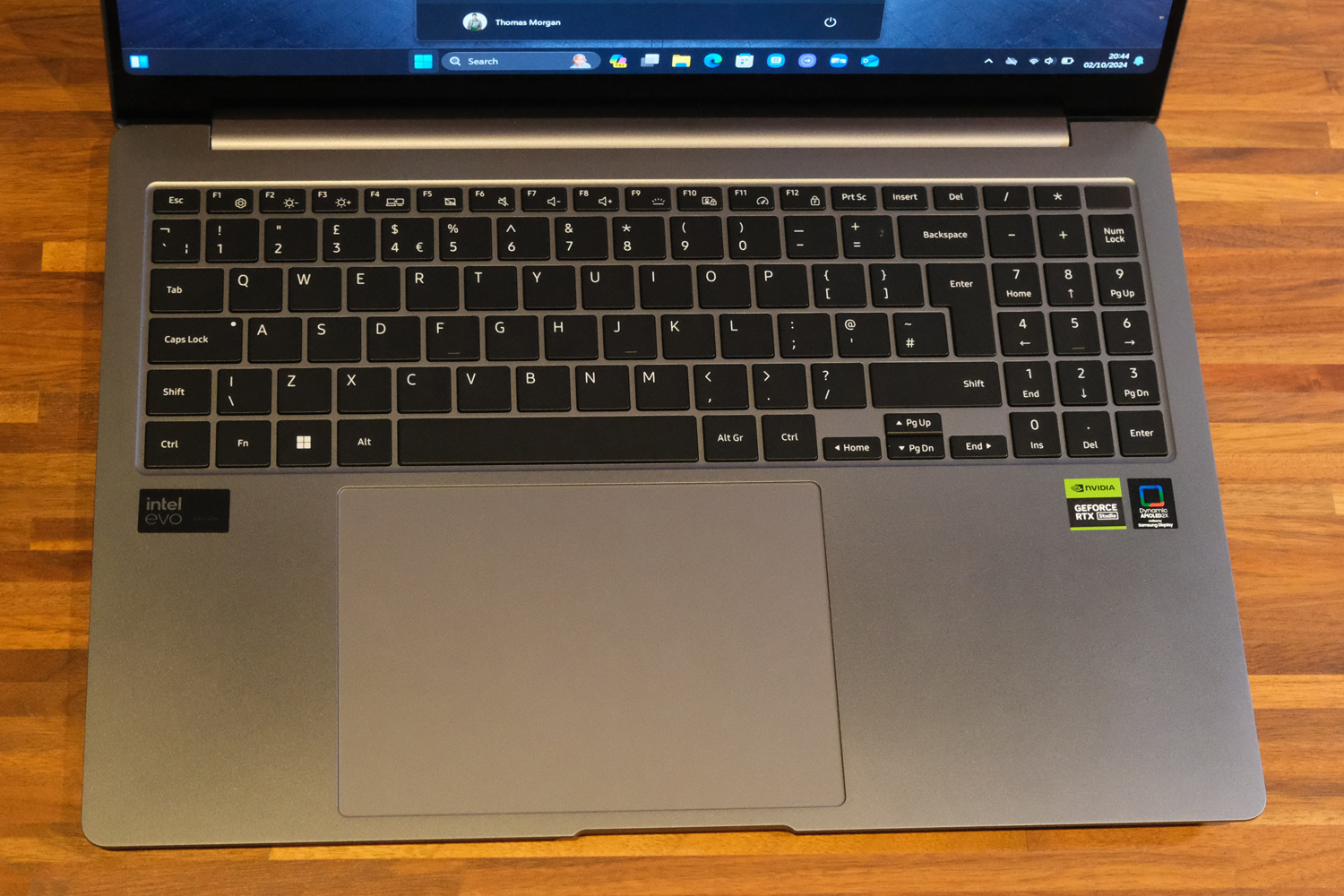

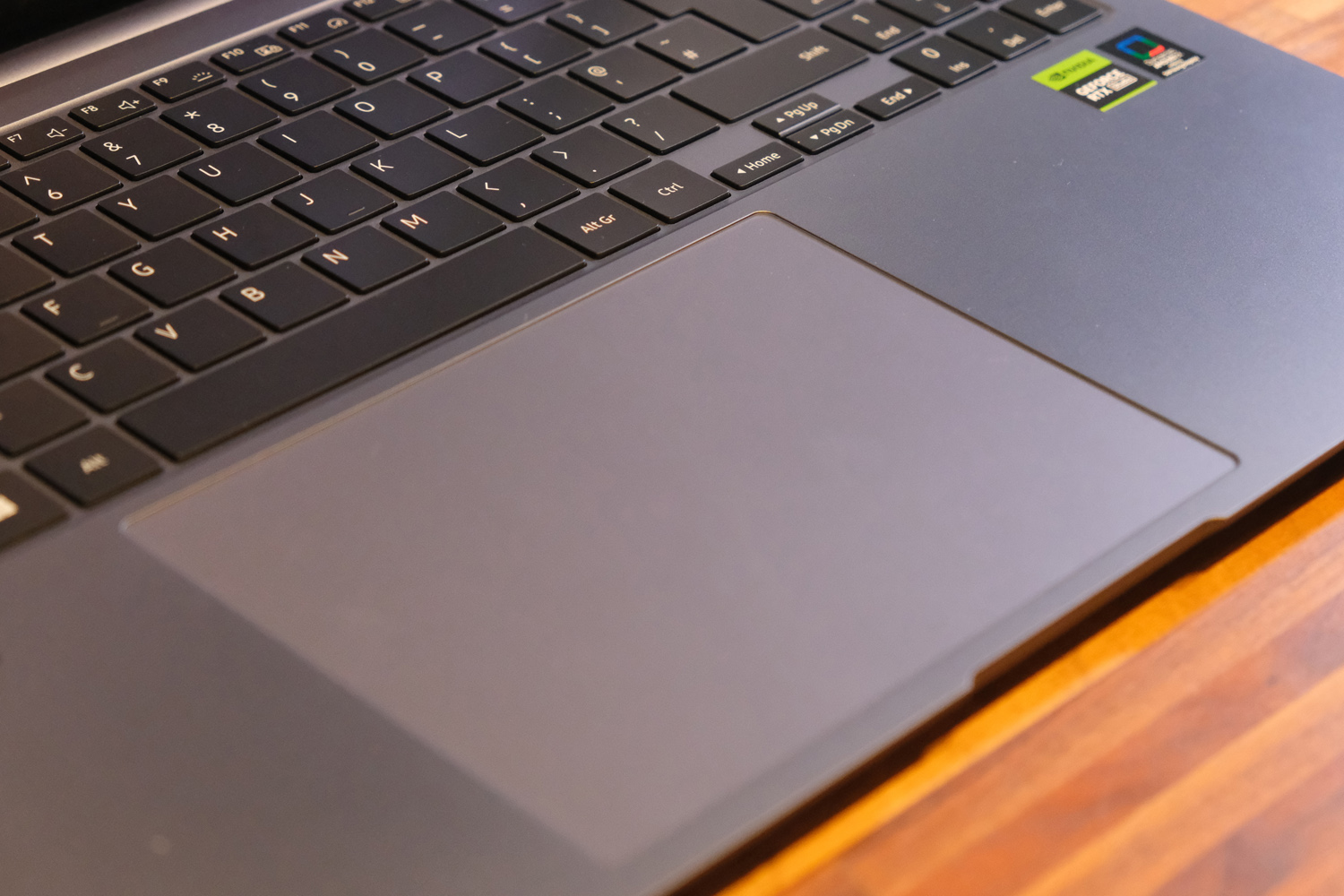
The biggest clue Samsung is targeting this laptop at the office world is the numerical keypad, which has been squeezed in next to the QWERTY keys without too much compromise. Only the function and arrow keys have been shrunk to half height. Black keys were a good choice for the white LED backlight, which shines through clearly and doesn’t hamper legibility during the day.
It’s a shame, then, that the typing experience is only average. Each key has a very short travel distance, so isn’t especially satisfying to tap away at. They’re also surprisingly loud, even without bashing away like you’re hammering nails. My emails weren’t littered with typos or anything, but it definitely took me a little while to adjust.
The giant glass touchpad below was more pick-up-and-play, with great sensitivity right out of the box and a near-friction free surface for fast swiping. Naturally multi-touch gestures all performed as expected, but it was a bit of a surprise to see Samsung sticking with a mechanical click; most rivals at this price tend to use haptic feedback, which I would argue feels more suited to a premium product.
The power button doubles as a fingerprint sensor, which is convenient for skipping the Windows lock screen. There’s no facial recognition using the webcam, though. Quality is decent enough for video calls, and the Intel processor’s NPU can use Windows Studio Effects to blur backgrounds without putting too much strain on the system.
Screen & sound: the OLED advantage
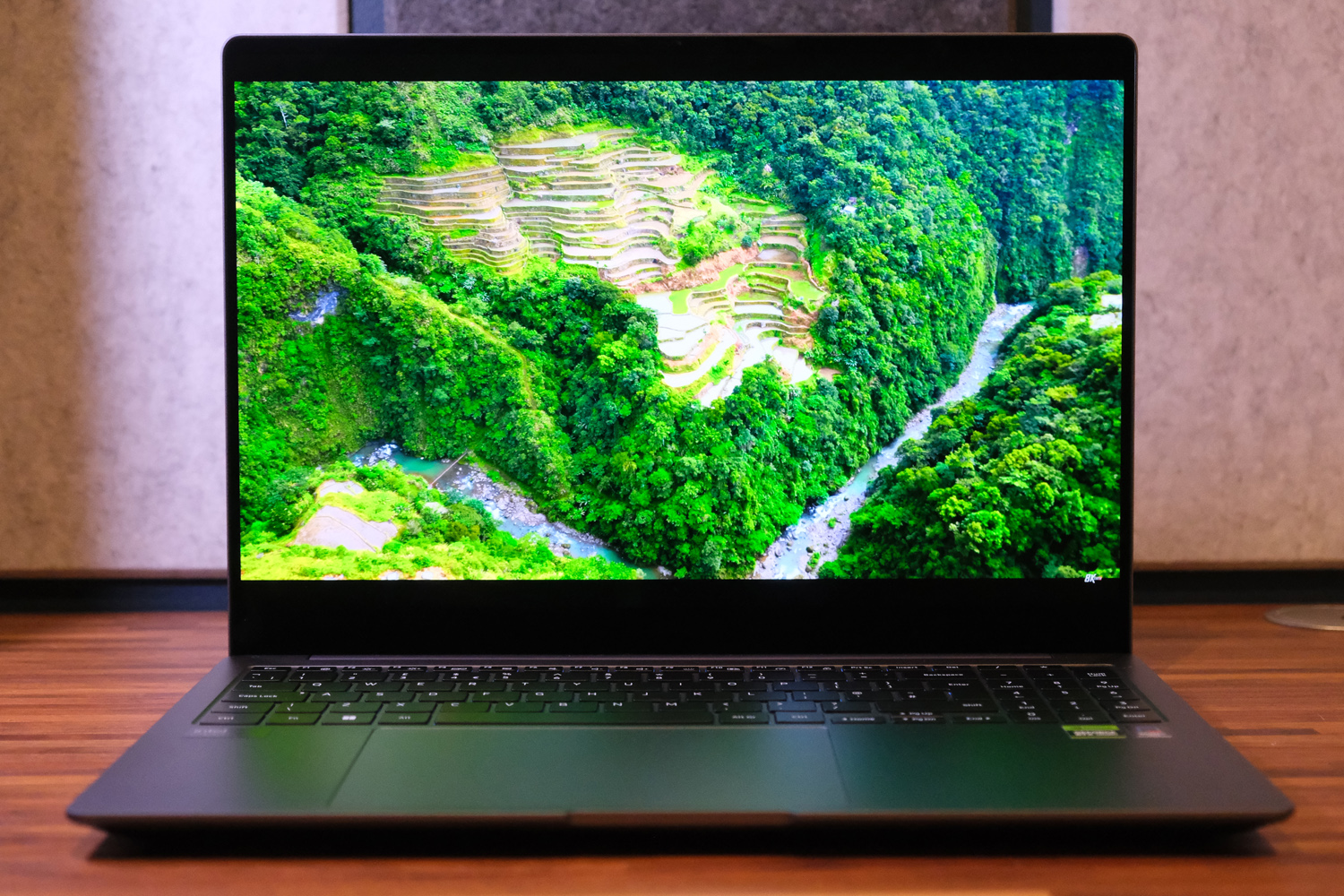
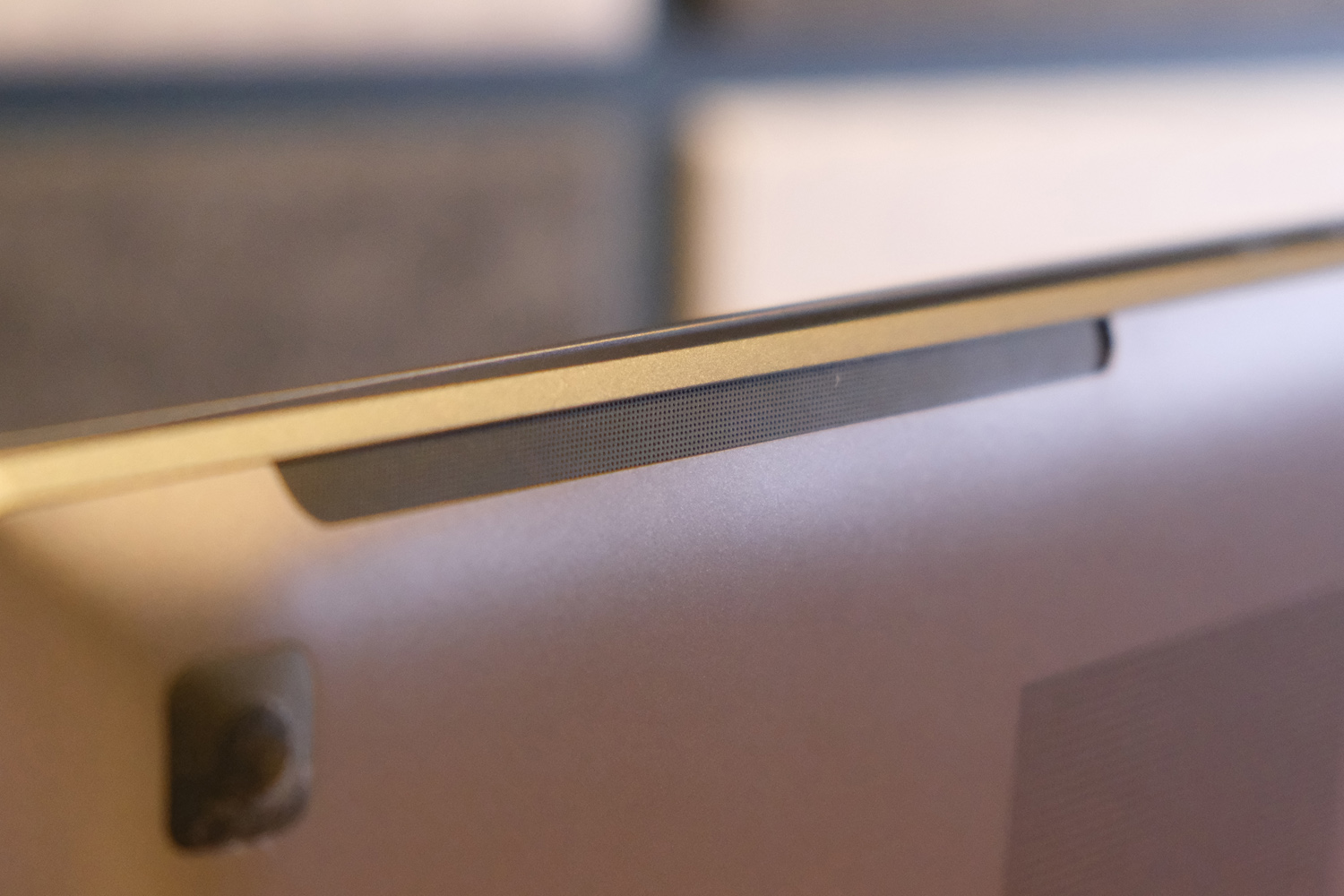
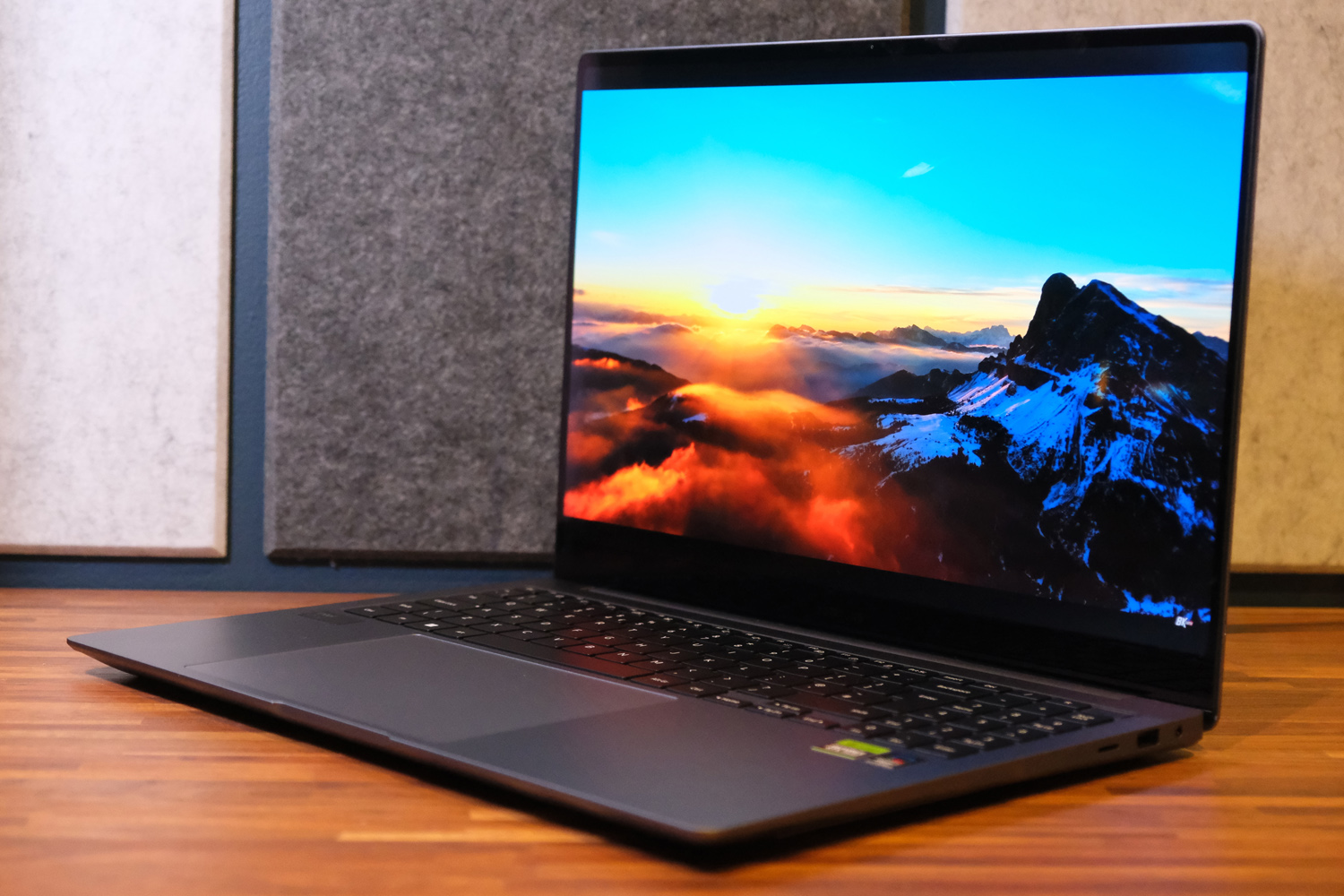
It’s here where Samsung surely claws back any lost ground – after all, it’s one of just a few firms that actually make OLED panels. Unsurprising, then, that the Galaxy Book4 Ultra’s 16in screen is a treat for the eyes. Colours are wonderfully dynamic, viewing angles are superb, and contrast is second to none. Darker scenes in streaming TV shows seriously pop with detail. This is where the HDR support really comes into its own, too.
I like that Samsung lets creative types pick between sRGB, Adobe RGB and DCI-P3 color presets, as well as the standard Vivid profile. Brightness is also pretty good for an OLED laptop, only really falling behind mini-LED models that are really able to pump out lumens at eye-searing levels. I had no issues working in rooms that let in lots of natural light.
While it’s true you could spend less than the Book4 Ultra’s asking price and get a higher resolution OLED, I didn’t feel especially short-changed. The 2880×1800 panel looks fantastically sharp and detailed, with crisp-looking text and the well defined whites against black backgrounds you simply won’t get from any LED or mini-LED rival. Unless you’re determined to edit 4K footage at native resolution, there are more than enough pixels here.
An adaptive 60-120Hz refresh rate keeps motion buttery smooth, and makes all the difference to how responsive touch inputs feel on the Gorilla Glass touchscreen layer. There’s no support for Samsung’s S Pen stylus here, though, and the screen doesn’t fold fully flat.
Four down-firing speakers deliver an audio experience that can’t quite live up to the visual one, with decent enough volume but a high-end heavy presentation that can’t hope to match the best laptop speakers. Apple continues to set the bar, while the larger Dell XPS models bring up the rear.
Performance: doesn’t disappoint
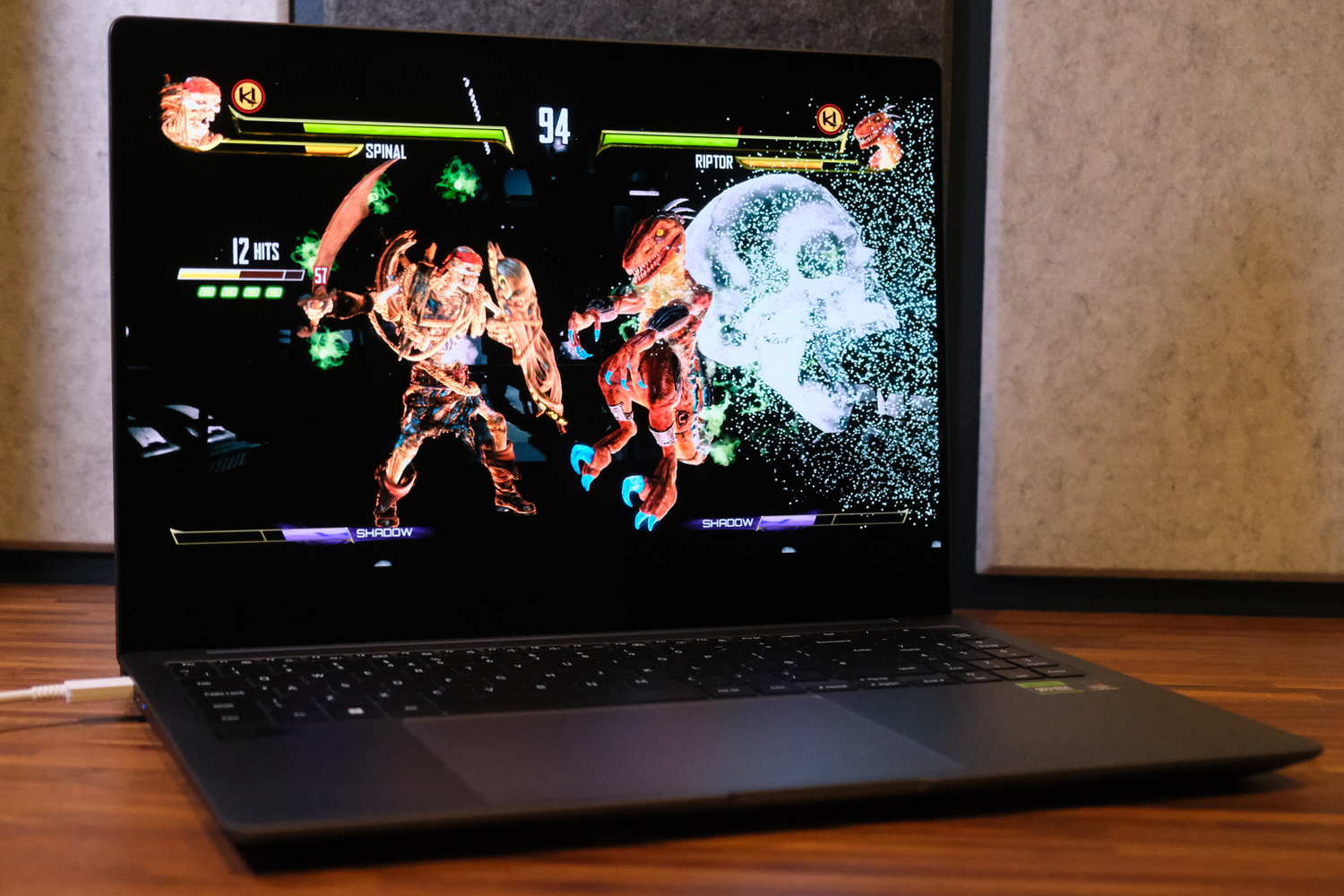
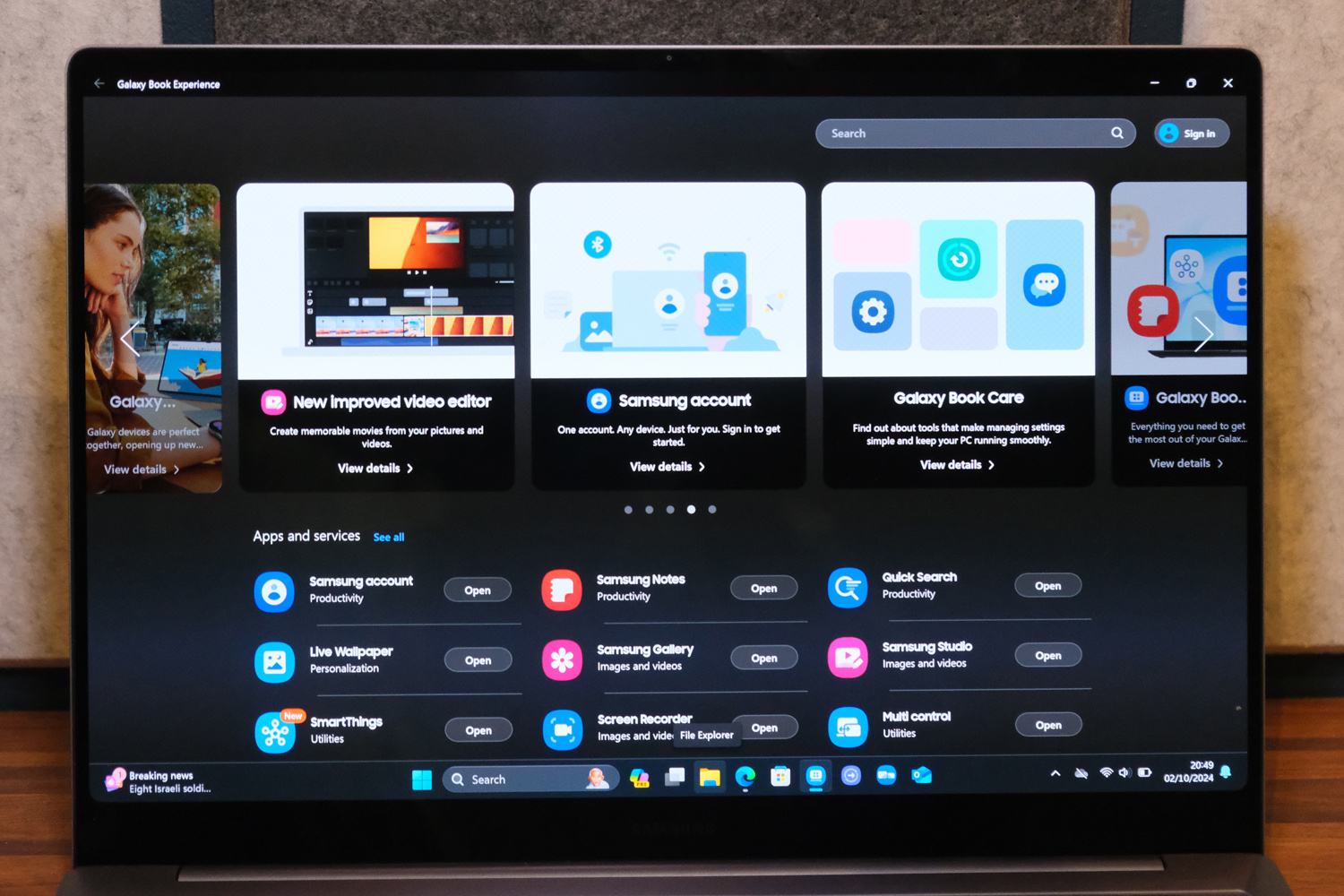
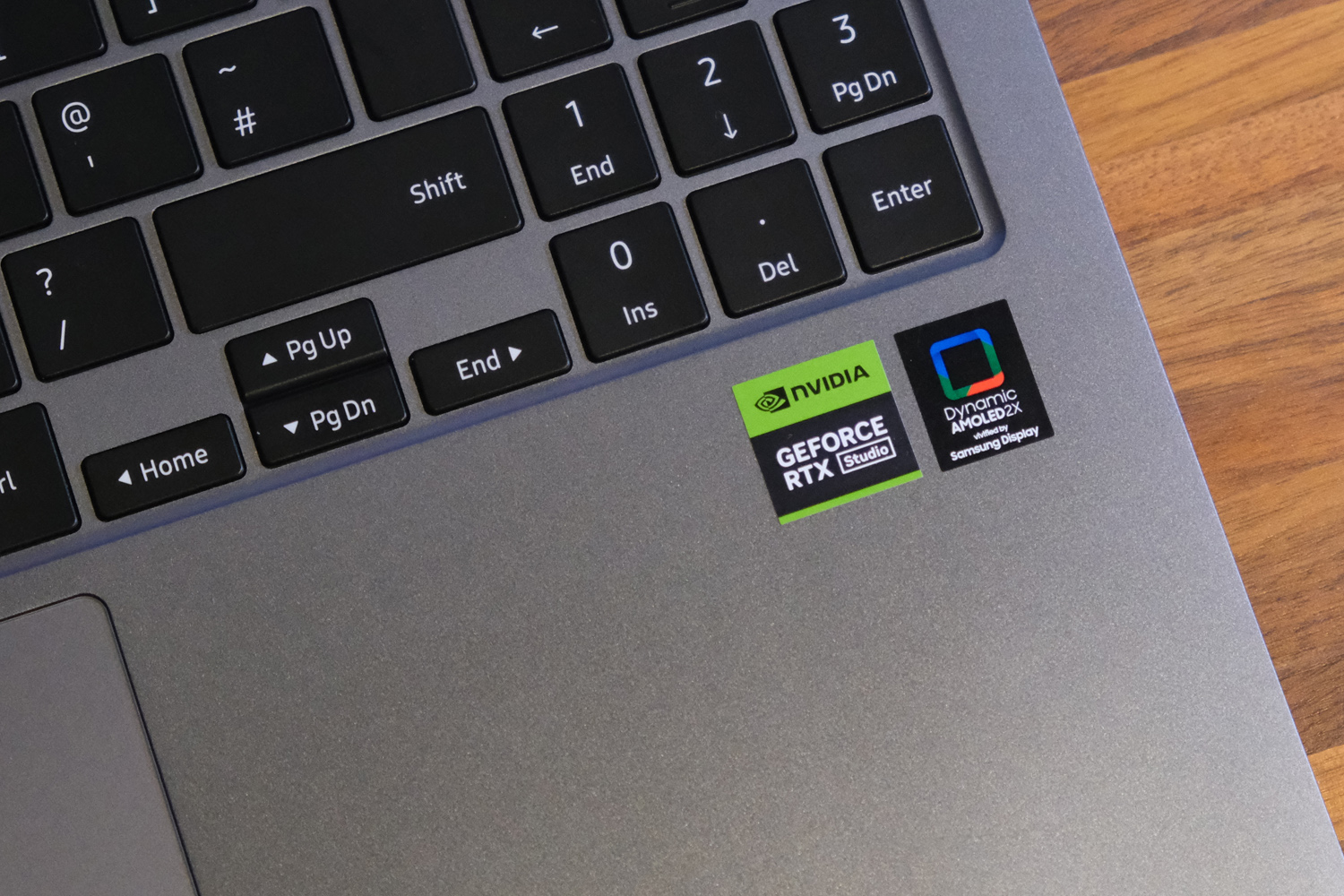
How muscular a machine do you need? Samsung has probably got you covered, with a choice of Core Ultra 7 and Ultra 9 processors, 16 or 32GB of RAM, 512GB or 1TB of SSD storage, and GeForce RTX 4050 or RTX 4070 graphics.
My review unit had a Core Ultra 7 155H CPU, 16GB of RAM, 512GB of storage and an RTX 4050. The latter is Nvidia’s Studio variant, meaning certified drivers that are guaranteed to play nicely with industry-standard software. That doesn’t detract from its gaming prowess, though, with DLSS upscaling and ray tracing on tap.
Desktop performance is on point for the processor, putting in benchmark scores on par with – or better than – rivals with the same silicon, including the Asus Zenbook 14 OLED. Depending on the job an M3 Pro-powered MacBook Pro will be quicker, but it’s not a home run for Apple by any means. This larger machine does a better job of keeping the chipset cool under load (without having to force its fans to warp speed), which could be crucial for CPU-heavy tasks like number crunching. When the fans do kick in, they’re impressively quiet.
It’s gaming, GPU-accelerated video editing and 3D rendering where the Galaxy Book4 Ultra sets itself apart from 16in rivals with integrated graphics. The RTX 4050 might not be Nvidia’s most potent mobile chip, but it’ll happy churn out enough frames per second to run most modern games at 1080p and high detail settings. As long as you avoid ray tracing, and don’t mind activating DLSS for the most challenging titles.
I just nudged north of 60fps in Cyberpunk 2077 with a bit of tweaking, and Counter Strike 2 was perfectly playable. Shadow of the Tomb Raider constantly hovered around 90fps. If you mainly play esports and indie titles you’ll be in for a treat, with only hardcore gamers needing to consider whether it’s worth stepping up to the punchier RTX 4070.
This laptop runs Windows 11, but Samsung had tried hard to keep you locked to its own ecosystem. There’s a huge array of preinstalled apps, including a separate settings screen that mimics the one found on the latest Galaxy smartphones. Want to switch your Galaxy Buds to your phone when a call comes in, use your Galaxy S24‘s camera as as webcam, or your Galaxy Tab S10 Ultra‘s expansive display as a second laptop screen? The Book4 Ultra has you covered. It’s a lot of bloat for anyone that isn’t already laden with Samsung gear, though.
Battery life: just keeps going
An OLED screen, mobile-oriented CPU and a graphics core that only kicks in when needed help the Galaxy Book4 Ultra put in a fantastic showing away from the mains. A simple video loop at half brightness tipped past 18 hours, which is considerably more than last year’s 16in ultraportables could manage.
In real-world use, I was comfortably getting between 10 and 12 hours per charge, with a mix of web browsing, video streaming, image editing and a bunch of other office-based apps. That makes this a proper “leave the power brick at home” machine unless you call the GPU into action, in which case it’ll drain considerably faster. That power adapter may be a real chunk, as I mentioned above, but it’s fast. It’ll deliver a 50% charge in about half an hour.
Qualcomm has certainly shaken things up with its energy-efficient Snapdragon X Elite CPUs, and Apple continues to do impressive things with its own-brand silicon, but this is up there with the best Intel-powered machines within its size class.
Samsung Galaxy Book4 Ultra verdict
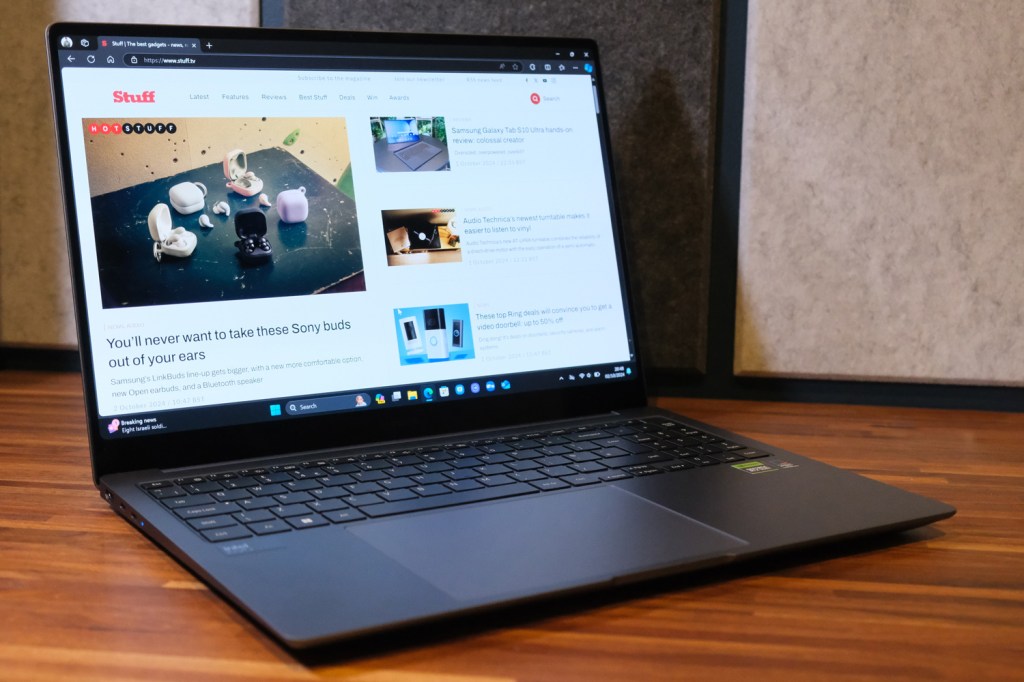
Few ultraportables straddle the line between professional, creator and gamer-friendly features quite like the Galaxy Book4 Ultra. If you’re wedded to Windows, its superb battery life and gorgeous screen make it a fine alternative to the Dell XPS 16 and Microsoft Surface Laptop Studio 2. It delivers potent graphics without the OTT styling found on a lot of laptops built with play in mind, and isn’t short on power either.
A merely OK keyboard and average audio let the side down a bit, and there’s no escaping the fact that it isn’t the best value option out there. Even a MacBook Pro in a similar spec is more affordable. But anyone already embedded in the Samsung ecosystem will feel right at home.
Stuff Says…
It isn’t flawless, and is seriously expensive in top-spec form, but the4 Galaxy Book4 Ultra is a versatile, creator-friendly powerhouse with a gorgeous screen and a GPU that’s great for gaming.
Pros
OLED screen is a real stunner
Fantastic battery life given the high-end hardware
Great for gaming as well as creative jobs
Cons
Keyboard feels a little cramped
Beaten on value by rivals, including the MacBook Pro
Own-brand software relies on you owning a Samsung phone
Samsung Galaxy Book4 Ultra technical specifications
| Screen | 16in, 2880×1800, 60-120Hz AMOLED |
| Processor | Intel Core Ultra 7 155H |
| Memory | 16GB RAM |
| Graphics | Nvidia RTX 4050 |
| Storage | 512GB SSD |
| Operating system | Windows 11 |
| Connectivity | HDMI, 2x Thunderbolt 4, microSD, 3.5mm headphone port |
| Battery | 76Wh |
| Dimensions | 355x250x16.5mm, 1.86kg |




